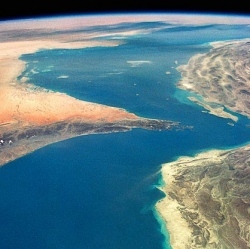
While cell phones are pervasive in developing countries, 4.3 billion people still lack access to the Internet. Some of these people are in rural parts where Internet providers don’t offer their services at all; others are in places where Internet access exists, but costs far too much relative to monthly income.
Syed Karim thinks he can bring Internet to the entire world in one fell swoop, with a little help from satellites. Announced earlier this year, Karim’s Outernet initiative plans to blanket the planet in Internet coverage.
“If we want to get information to everyone, we must bypass traditional pathways. There’s a pathway that already encompasses the whole world: radio waves," he said during a recent talk at TEDGlobal.
At a basic level, here’s how Outernet works: Using a combination of nano-satellites and larger, conventional geostationary communications satellites, the service broadcasts Internet content to anyone with a receiver that broadcasts a Wi-Fi signal.
For now, it only goes one way, that is, the satellites download the data they will eventually transmit, store it in a hard drive, and users on the ground get automatic updates. Essentially, they get to see an offline version of the Internet (parts of it, at least).
Outernet is available in select locations across the world, and it is broadcasting news, emergency alerts, Wikipedia articles, and education sites to start. As of October 1, Outernet is available in full beta, which means that users can request sites to be broadcast from the satellites here. For now, Outernet uses only conventional satellites; it plans to launch nano satellites next year.
